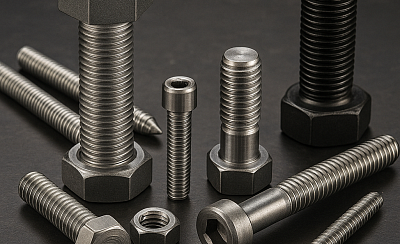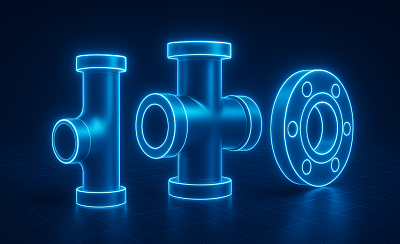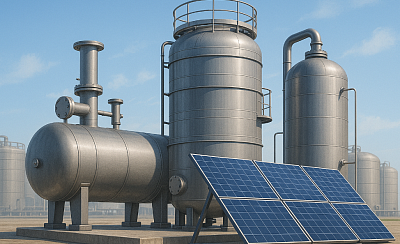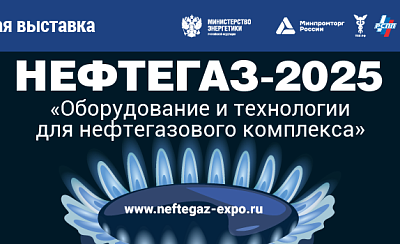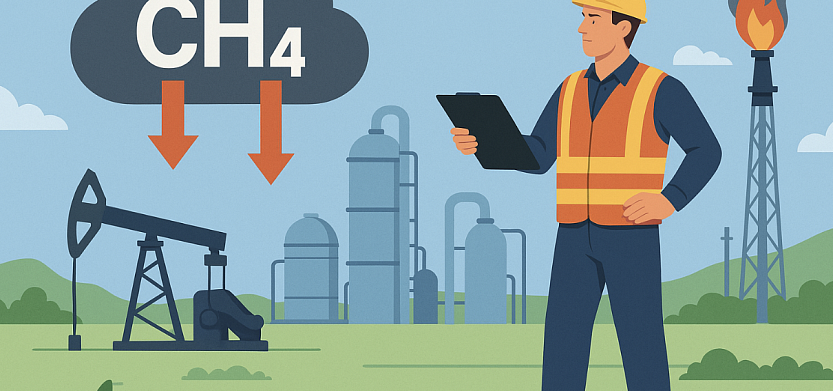
Reducing Methane Emissions in Kazakhstan: Achievements and Challenges in the Oil and Gas Sector
Kazakhstan is emerging as a global leader in reducing methane emissions in the oil and gas industry, supporting international efforts to combat climate change. Since joining the World Bank’s Zero Routine Flaring initiative in 2015, the country has made significant progress in reducing the flaring of associated petroleum gas. In December 2023, Kazakhstan also joined the Global Methane Pledge (GMP), committing to a 30% reduction in methane emissions by 2030. ASME standards, including the ASME Boiler & Pressure Vessel Code (BPVC), play a key role in ensuring the safety and efficiency of equipment used for methane leak detection and mitigation. The Importance of Methane Reduction Global Context: Methane (CH₄) is the second most impactful greenhouse gas after CO₂, with a global warming potential 80 times higher over the first 20 years after release. The oil and gas sector accounts for around 40% of anthropogenic methane emissions, making it a critical focus for mitigation. According to the International Energy Agency (IEA), up to 75% of methane emissions in the sector can be eliminated using existing technologies, often at minimal cost. Kazakhstan’s Role: The energy sector, including oil and gas, contributes 49% of Kazakhstan’s national methane emissions. According to Jasyl Damu JSC, methane emissions have decreased by 40.8% from 1990 to 2021, from 4 million to 2.3 million tons. In 2024, Minister of Energy Almasadam Satkaliyev reported a further reduction of 1.2 million tons over the past five years, underscoring the country’s continued progress. Environmental and Economic Impact: Reducing methane emissions not only slows global warming but also improves energy efficiency by capturing gas for commercial use. This supports the Paris Agreement goals and strengthens Kazakhstan’s reputation as a responsible participant in the global energy market. Technological Solutions and the Role of ASME Standards LDAR Programs: Kazakhstan is actively implementing Leak Detection and Repair (LDAR) programs using satellite technologies and software such as the Methane Inventory Systematic Tool (MIST) developed by Carbon Limits. These systems identify methane sources across extraction, transportation, and processing stages. ASME-Certified Equipment: The ASME BPVC Section VIII governs the design of pressure vessels and storage tanks used for gas capture and containment. ASME-compliant equipment ensures operational safety under high pressures and in aggressive environments, such as moist CO₂–methane mixtures. Welding and Materials: ASME Section IX defines welding procedures that guarantee joint integrity in pipelines and vessels. Corrosion-resistant materials such as stainless steel 316L are used to prevent leaks. Nondestructive Testing (NDT): ASME Section V regulates inspection methods such as ultrasonic and radiographic testing to detect equipment defects—critical for preventing methane leaks. Training and International Cooperation: In September 2023, KazMunayGas (KMG), in cooperation with Carbon Limits and UNEP, conducted personnel training on methane reduction techniques, preparing the industry for GMP implementation. Kazakhstan’s Achievements Reduced Flaring of Associated Gas: Since joining Zero Routine Flaring in 2015, Kazakhstan has significantly cut the flaring of associated petroleum gas, minimizing gas losses and conserving valuable resources. National Methane Forums: In 2023 and 2024, National Methane Forums held in Astana provided platforms for dialogue between the government, industry, and international organizations. The forums produced roadmaps for methane reduction, including biogas technology deployment. Educational Initiatives: USAID supported the introduction of methane emission courses in 27 universities across Kazakhstan, raising awareness and preparing specialists to work with advanced technologies. Challenges and Risks Major Leaks: Despite progress, in 2023 a major methane leak occurred at the Karaton field in the Mangystau region, where a fire released 127,000 tons of methane. Such incidents highlight the need for enhanced monitoring and modernization of older wells. Financial Costs: Implementing LDAR programs and ASME-certified equipment requires substantial investment. However, according to the IEA, about 50% of methane reduction measures pay for themselves through gas capture and resale. Regulatory Barriers: Aligning national standards with international ones, including ASME and GMP, remains challenging, especially for smaller operators. Conclusion Kazakhstan’s consistent progress in methane reduction demonstrates its commitment to sustainability and technological advancement in the energy sector. The integration of ASME standards, modern LDAR technologies, and international cooperation programs reinforces the country’s leadership in responsible energy development. By combining environmental responsibility with industrial efficiency, Kazakhstan is paving the way toward a cleaner, more sustainable global energy future. Sources: Clean Air Task Force (catf.us), U.S. Energy Information Administration (eia.gov), KazMunayGas (kmg.kz), SECCA (secca.eu), Kursiv Media (kz.kursiv.media)
More
